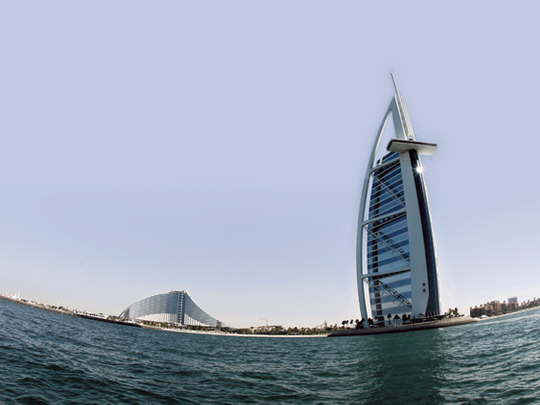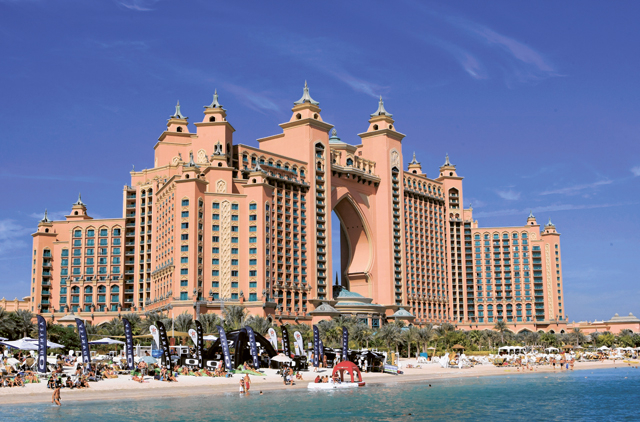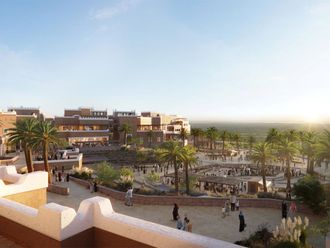
Dubai Look to the East and keep looking. For Dubai's hospitality sector — emerging from an extended spell of a soft market — that's the only direction that matters in the medium term.
And here's why. An estimated 150 million new travellers from China and India are estimated to be on the lookout for destinations that meet their fancy and, of course, their wallets. Spending by the Chinese on travel could shoot up by a substantial 70 per cent or more in the next five years.
If Dubai and other destinations in the Middle East manage to attract a percentage of this business from China and India, the current woes of the region's hospitality industry can be easily relegated to the past. With each new flight being added by GCC carriers to a destination in China or India, future prospects for hotels get brighter.
For Deloitte, the international consultancy, what this portends — in combination with other favourable factors — is nothing less than a game changer for Middle East hotels.
In a report issued last week, Hospitality 2015, it states without equivocation: "Add to these ingredients the cultural and religious heritage of the Middle East, a young population and substantial investment in tourism infrastructure in the GCC led by Saudi Arabia, the UAE and Qatar and the stage is set for the region to emerge as preferred destination for travel and tourism globally."
The release of the Deloitte report coinciding with Qatar winning the rights for the 2022 football World Cup may have been a coincidence, but there can be no denying that it has put the GCC in the global spotlight.
But a lot of hard work — and air miles — need to be expended before regional destinations get on to the Chinese traveller's radar. According to Deloitte, the Chinese traveller prefers the tried and tested when it comes to their destination preferences. A glance at the top ten destinations indicates the absence of any in the Gulf, and features Hong Kong, Macau, South Korea, Japan, Russia and the US.
But the hospitality sector here need not be unduly concerned about this. "The outbound travel sector [in China] is still very much in its infancy, having only developed over the last five years," said the Deloitte report.
"As per capita GDP increases, we believe that Chinese travel patterns will evolve from domestic to regional and then onto long-haul."
The UAE is far from being discovered by the Chinese traveller. The sprouting of dedicated retail clusters for Chinese goods in Dubai and, more recently, in Ajman have ensured Chinese firms are increasingly aware of business prospects here.
Distinct presence
Moreover, Chinese companies are increasingly open towards having a direct presence in Dubai as leasing terms for office space grow even more favourable. A similar sentiment was expressed by Indian companies as well in a report by Cushman and Wakefield, the property company.
Where business flows in, it's generally understood that at some point in time, travellers seeking fun and leisure pursuits will follow. Shortening the time lapse between the two should be what Dubai hotels look into.
"In the emerging markets, the rise of the middle classes will drive significant new demand for both leisure and business hospitality," said Alex Kyriakidis, global managing partner of tourism hospitality and leisure at Deloitte.
"Hospitality operators who understand the drives and needs of these growing demographics will reap the rewards and become the future leaders in the industry."
Local and regional hotels now have the breathing space to put together marketing plans and campaigns that can go after such opportunities. All of 2009 and the first half of this year was spent firefighting operations due to declining guest arrivals from the traditional feeder markets in the West.
Gross operating margins in the hospitality industry have been severely crimped as a consequence. But even on this score, there are hints of improvement. It was in September that the revenue per available room (revPAR) score for Dubai's hotel sector recorded an improvement for the first time in 12 months, albeit by an anaemic 0.1 per cent, in dollar terms, according to the Deloitte report. The current revPAR is estimated at $240 (Dh881), down from $300 in 2007.
After 12 tortuous months, the sector is willing to take any number that's in positive territory. Moreover, industry sources say they are hopeful of relatively strong occupancy numbers between now and March.
Local developers are more intent on finishing existing projects than taking on new ones. The impression is that project funding will be limited and is expected to remain so.
A financing deal announced by IFA Hotels and Resorts last Tuesday spells hope. Its asset management subsidiary, IFA Hotel Investments (IFI HI), has secured a $115 million financing for its Fairmont Palm Jumeirah project. Structured and arranged by Standard Chartered Bank, the arrangement will enable IFA Hotels and Resorts to expedite the project's completion to the first quarter of 2012.
"It is evidence of renewed confidence in the region and the industry and confirmation of ongoing confidence in the IFA Group and its projects on the Palm Jumeirah," said Joe Sita, president of IFA HI.
The coming weeks will see whether the financing taps can open further. Hotel-related activity will continue apace in Saudi Arabia, but geared towards a large domestic traveller base, and Qatar, with an eye on 2022. Dubai itself does not require additional capacity in a hurry, according to Kyriakidis. An estimated 30,000 rooms are expected to be added, but Kyriakidis suggests even "15,000 rooms would be a fairly big increase for Dubai to absorb."
Rather than add more of the same to the pipeline, developers with cash to spare could divert their attention to other tourism related pursuits.
According to the consultancy firm Booz and Co, this could take the form of building tourism assets centred around marinas. "Nautical tourism boosts regional economies by encouraging foreign spending on domestically produced goods and services, increasing governmental revenues through taxes, and creating employment," said Fadi Majdalani, partner at Booz and Company.
That may be, but post-recession developer mindsets may not be attuned to sprawling real estate ventures.
There might have been less people travelling, but global investment flow into hotels did manage to recover ground this year after dropping to their lowest level in 2009. For the coming year, investment growth could record a healthy 30 to 40 per cent.
Volumes are expected to reach $28 to $30 billion on the back of a "rebound in operating fundamentals and the broad cross-section of equity capital in the market," according to Jones Lang LaSalle in its Hotel Investment Outlook 2011.
"With more stock hitting the market in 2011, there will again be an increased depth and breadth of opportunities for investors," said Arthur de Haast, global CEO of Jones Lang LaSalle Hotels. "Until liquidity improves in the debt markets, however, the most acquisitive hotel investors will likely be those that make all-equity purchases or structure acquisitions with low leverage levels."
The firm expects to see real estate investment trusts (REITs), institutional investors and private and high networth investors investing next year.
Hotels became accepted as more of a mainstream asset class over the past decade, though the combination of property and business risk makes them inherently complex.
"Early movers and risk takers will often be rewarded, but the likely common theme across all markets and segments in 2011 will be to focus on hotel property investment fundamentals," de Haast added.













